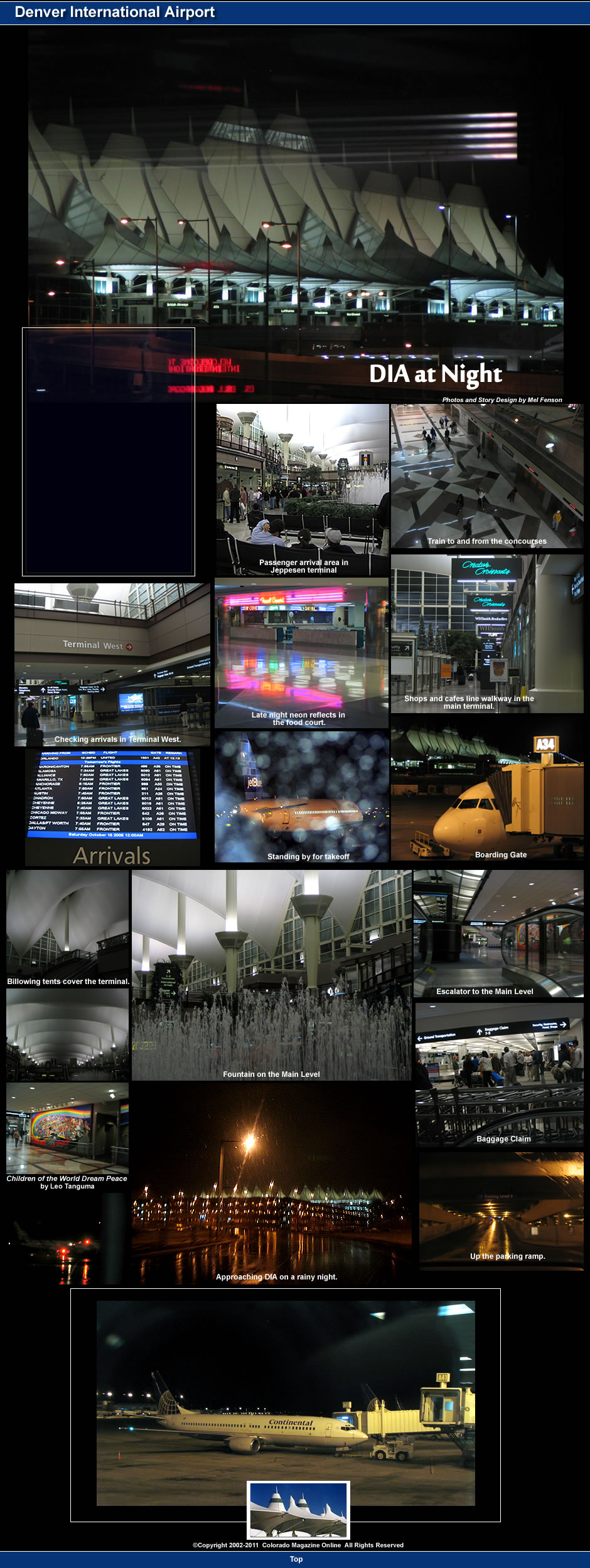

DIA is located 23 miles northeast of downtown Denver. It is serviced by Denver’s RTD bus system, which provides transportation from thoughout Denver and surrounding towns. Extending over 53-square miles of land, DIA can currently accommodate 50-million passengers a year. According to Aviation Manager Kim Day, DIA provides jobs for 30,000 people, who she added, “are to be congratulated for balancing safety and security, while providing an enjoyable experience for travelers.” Annually generating more than $22- billion for Colorado’s economy, DIA has become a primary economic engine in the state of Colorado.
DIA’s main Jeppesen Terminal has east and west facing arrival and departure areas from which passengers access the airport’s three concourses - A, B and C. The main terminal has ticketing, flight check-in, and baggage claim areas and provides access to ground transportation. Sleek automated trains shuttle passengers back and forth between the Jeppesen Terminal and the three concourses. Travel time between each of the concourses and the terminal is less than 5 minutes. The train stations, which are located on a lower level are accessible by elevator and escalator from each concourse.
A Rocky Mountain United Service Organization (USO) Center for traveling members of the armed forces and their families is located beyond security screening in the President's Club at the end of a pedestrian bridge which connects Jeppesen Terminal with the A Gates.
The airport has both shuttle bus serviced outlying parking areas and covered close-in parking structures.
DIA is internationally noted for the spectacular tent-like roof design over its main Jeppesen Terminal. The tent design reflects images of both the tents of the plains Indians, who once roamed Colorado and the peaks of the Colorado Rocky Mountains to the west. The 126 ft. high Teflon-coated fiberglass,roof tents are supported by 34 masts and steel cables, which utilize a catenary cable system for support - similar to that of the Brooklyn Bridge. Another interesting feature of the terminal is a passenger bridge from which people can watch airplanes taxi below.
DIA's 327-foot FAA control tower overlooks takeoffs and landings from DIA’s six runways. The fueling system at DIA is capable of pumping 1,000 gallons of jet fuel per minute.
With
a sense of culture, artists worked with architects, designers, and construction
companies, during DIA’s construction to integrate art into its
architecture, and environment. Implementing that vision, DIA showcases
a series of 30 sculptures, murals, and other art , which gives it the
distinction of providing the most extensive airport art program in the
world. Art exhibitions at the Denver International Airport include a
number of different venues with exhibits that are changed often to provide
a variety of art experiences for travelers to enjoy as they pass through
the airport during their travels.